Onions - one of the most popular and healthy green plants used on the tray of the pen. Fresh, rich in vitamins, greens, it turns out to be grown all year round. And if desired, this simple technological process will overcome anyone.
About how to grow onions on the feather - in this selection of material. Step-by-step technology of landing and leakage in the open soil or at home will help overcome any difficulties and get a good harvest.
Detailed photos and video master class will improve information perception.
Features of growing onions on the pen
Onions - famous edible culture used for cooking and decorating a variety of dishes. A valuable garden plant is valued not only by taste, but also has a healing effect on the body. The person uses all parts of the plant: ground, in the form of green leaves, and underground, in the form of a scaly bulb. Narrow linear leaves of the onions are called "pen" to similarize them with long and thin feathers.

- The reversal of the bow on the pen is carried out in different ways: in a container on the windowsill, in the open ground or in a greenhouse.
- The greenery of the bow can be grown using soil soil, water or other, innovative, technologies (hydroponic, sawdust, etc.).
- Luke on the pen can be grown both from sample bulbs and from seeds. In the latter case, it will take significantly more time to obtain the desired result.
- Onions on the feather are planted in several ways: bridge (tightly to each other), semi-axle (the distance between the bulbs is not more than 3 cm) and the tape (rows). Dense (bridge) landing does not give the opportunity to the active growth of the bulbs, because of which, the plant all life force directs to the surveillance of the green feather.
- To get a high white base when pasting a beaker's pen, you can resort to small tricks. To do this, putting the bulbs into the deep groove, there are constantly being plucked by the soil so that sometimes it stretched more.
- Buy onions on the feather can be in any specialized store, in agricultural exhibitions or on the market. Moreover, the bow of the north on the feather will cost much cheaper than adult bulbs. On the other hand, the spontaneous sample bulbs will be able to "please" with greens in 2-3 weeks, while seed, maximum, in six months.

Useful properties of the greenery of Luke
- The greenery of Luke, rich in vitamins, macro and microelements, is a tireless allied in combating avitaminosis and respiratory diseases.
- Fitoncides and essential oils included in the leaves are actively opposed to viruses and bacteria. This also applies to such formidable infections as tuberculosis, angina, diphtherite and dysentery.
- Luca nutrients are involved in the blood formation process, so greens are particularly shown to people who are ill-friendly.
- The green onion includes chemicals (phosphorus, zinc, potassium, magnesium, nitrogen, calcium), the disadvantage of which can entail hair loss or nail fragility.
- In the greenery of Luke contains a lot of valuable vitamins. Vitamin A is a powerful antioxidant, contributes to improving vision, normalization of the work of the heart muscle and strengthening hair (nails).
- A group of vitamins B (B1, B2, B3, B9) participates in the metabolism, supports immunity, reduces cholesterol levels, neutralizes toxins, contributes to the regulation of the nervous system.
- Vitamin C (ascorbic acid) is an indispensable antioxidant and biologically active substance. Vitamin increases immunity, improves the organism resistance to viruses and bacteria.
- Vitamin E is responsible for the normalization of the work of the human reproductive system.
- Among other things, the onions contain no less valuable and useful proteins, sugar, organic acids, enzymes and glycosides.
- The bow is characterized by a bactericidal and anthelmintic property, reassuring and diuretic effects, improves appetite, activates the release of the digestive juice.
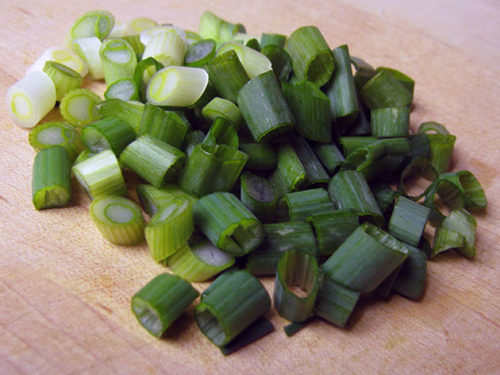
Contraindications to the use of the Green Luke
- Unfortunately, the use of crude greenery is not recommended for people suffering from some diseases of the digestive system, such as: gastritis with increased acidity, ulcerative disease.
- It is not necessary to zealous and hypertensive, as the use of green onions in large quantities can increase blood pressure.
- During the period of exacerbation of diseases of the cardiovascular system, bronchial asthma is also not desirable to use the beaker's pen.
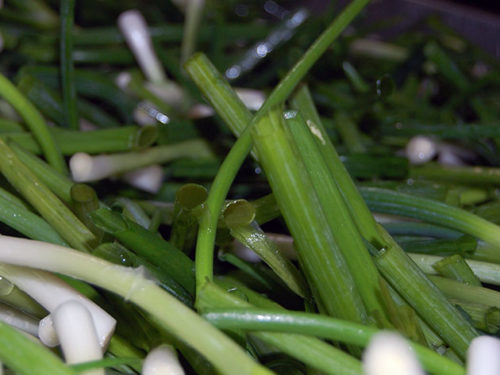
Onions on the feather. Preparation of planting material
- The process of growing the greenery of the onion begins with the preparation of the planting material, in particular, the maternal lukovych.
- As a rule, onions are used on the pen (the onions is often called the onion), from which instances of medium sizes are best suited, characterized by a short period of rest. A similar sample of bulbs will significantly improve the yield of the green product.
- The optimal size of the sample is the bulbs 3-4 cm in diameter and weighing not more than 40-50.
- The bulbs sort, clean from excess husks and selected damaged or deformed instances. The selected high-quality lucker for landing is dense, with a shiny dry husk, without dents and rot.
- Before boarding, the bulbs are treated in a disinfecting solution. To do this, they are soaked in a weak solution of manganese or salt. And to protect the plant from the peridosporosis infection, the bulbs are additionally heated for 8 hours at a temperature of 40 ° C.
- With mass landings (for example, for sale), sorted bulbs should be about the same sizes - then the period of distances of the pen in all will be identical, which will ensure simultaneous stem.
- In order for the adult bulb faster than the pen, it is necessary to cut the top of the bulbs by 1 \\ 4 part. Thus, the kidneys will receive more oxygen and begin to actively grow. In addition, pruning not only accelerates the germination of the pen, but also significantly increases the yield of culture. An additional reception that stimulates the fast pasture of the pen will be shallow vertical cuts made after cutting "caps" of the bulbs.
- Sprouted planting bulbs cut no longer needed, as the process of reversing onion, on the contrary, will slow down.
- The rapid germination of bulbs also contributes to soaking them in warm water overnight. After such a procedure, the tops of the onion sample are also cut.
- Apply another option to stimulate bulbs to active growth. For this, the onions are poured into a bunch in a warm place and watered with warm water (not higher than 30 0WITH). After the "water procedures", the pile is covered by 4-5 days by burlap or other air-permeable material.
- All the designated manipulations stimulate the germinations of the bow leaves (at least 5-7 days) and increase the yield of the green mass by 60-70%.

Onions on the feather - soil preparation
- High-quality nutritional soil is an essential condition for the successful growing of a bulbous greens.
- The ground for landing should be loose, light and breathable.
- Experienced gardeners recommend cooking from the turf (garden) land, peat and humidia, with the addition of superphosphate (30 g per m 2) and sodium chloride (15 g m 2).
- If the onions are planted into the container, the soil mixture layer is about 10 cm.
- In the case of landing onion, a preliminary deep peopling of the Earth is obligatory. As a rule, organic fertilizers (humid, compost) are entered together with the rescope. Before boarding, the soil is smoothed and slightly seal to avoid unnecessary seed after planting.
- To assemble the crop in the spring, the bed must be prepared from autumn. And the landing plot is selected, protected from drafts and winds, better on the southern slope (then the spring sun will warm the soil faster).

Dates of landing onion on feather
The average stretching period on the feather is 2-3 weeks. Based on this, as well as taking into account the purpose of landings (for yourself or for sale) and the conditions for growing onions on the feather, and the dates are calculated.
An important role in determining the landing timelines is played by the selected planting method: seed or bulb.
The variety, quality and preliminary preparation of selected bulbs also affect the time periods of the pen.
- Onions on the feather at home can be planted almost yearly.
- In the greenhouse, landing is carried out in the cold season: from October to April.
- In the open soil, the bulbs are planted in a warm time, starting with spring and ending with early autumn, in order to have a harvest before the onset of the first frosts.
- As for the seed fit way, seeds are sown in July in July, so that the greens "hastily" by the spring.
- Thus, observing certain conditions and planting technology, the green greens can be grown all year round.
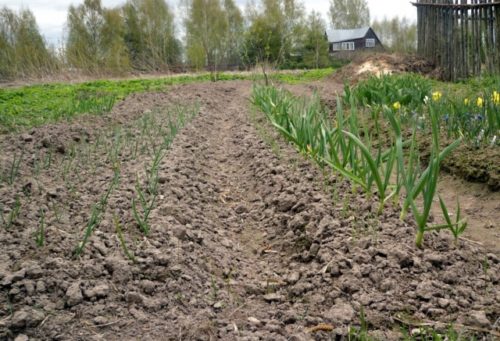
Luke growing technology on the feather at home
Online reversing technology on the feather depends on the conditions of cultivation. In the home setting, the onions can be obtained in different ways, depending on the volume and availability of certain resources.
If the greenery of the bow is grown in small quantities, so to speak, "for the family," will suit the way of germination of bulbs in a container, in water or, traditionally, in the garden.
If a significant product turnover is assumed and massive growing for sale, use landing in greenhouses or on large garden spaces.
As soon as the pen length reaches 30-35 cm - the greens is ready for cutting. To have a fresh greens on the table all year round, it is necessary to land it constantly (by the conveyor), every 2-3 weeks.
From maternal bulbs can be obtained, depending on the grade of the bow, up to 4 greenery fees.

Lowing on the feather in the container
- Luke landing container should be about 7-10 cm in height so that the container or boxes can be filled with soil substrate and place the bulbs to root.
- Sutting down onions on the pen in the container, it is often used by the so-called. "Bridge" way when the bulbs are planted closely from each other. The distance between "neighbors" does not exceed 1-2 cm.
- At the same time, the bulbs are not strongly plunged into the ground: they are exposed to the prepared soil substrate (donated) and slightly only push into the soil (by 2-3 cm). In order not to damage the roots, many gardeners do not push the bulbs at all, but simply lay them out and sprinkle with top 2-3 cm of soil lights. Too thick layer of soil will detain the development of vegetable culture. After landing, the soil shed warm water.
- Such technology allows to significantly save space during the landing period. For growing juicy greenery on 1 m 2 It will take about 10 kg of bulbs.
- A bow container is placed in a warm room where the temperature is maintained about 25-30. 0With that leaves sprout faster. A week later, when the pen length is about 1.5-2 cm, the container can be transferred to the room with a lower temperature. The best temperature indicators of successful green germination will be numbers 18-22 0WITH.
- Caring for germinating bulbs is regular (1-2 times a week) soil watering. Moreover, it is better to water warm water (25-30 0C) not to disturb the total temperature regime and stimulate the rapid growth of the leaves.
- It is not necessary to feed the landing onions, all the necessary nutrients leaves are obtained from the bulbs and in advance of a fertilized soil substrate.
Ludge on the feather in water
- To grow the greenery of the onion in the water, a deep pallet is prepared, where all the bulbs are tightly stacked. The pallet is poured about 1 \\ 4 part so that the bottom with root hairs is completely immersed in water.
- After about 2 weeks, the long-awaited greens will appear.
- As the green feather of Luke grow and develops, it is important to maintain a constant water level in the pallet, regularly topping it. Only roots should be divered into the water, otherwise the likelihood of the body of the bulb is great.
- To obtain greenery in small quantities, you can use conventional jars or disposable cups.
Onion Growing Technology on Feather in Teplice
- For landing onion in the greenhouse, a pre-selected annual or two-year-old bulbs are suitable. Most often, onions on the feather in the greenhouses are planted in autumn.
- Luca landing is carried out by a bridge in the soil of the mixture, with the addition of peat, humus (reworked manure), wood ash or compost. Good hazardous soil will allow maximum yields. From above, the soil is slightly sprinkled with lime - flock to prevent the appearance of mold.
- In non-heated greenhouses, planting is practiced by a bright way, with a distance between the bulbs about 2-3 cm, for better rooting them. Planting material is planted late in autumn, followed by a thick mulching (5-6 cm) with a layer of compost or humus. In the second half of February, the mulch from the landings is cleaned, the bulbs are watered with warm water and covered with a film (make a greenhouse). Hut down onions in this way, it is not necessary to trim it.
- In the greenhouses the landing is carried out on the prepared beds or in the seaside boxes. The depth of containers should be about 10 cm. Boxes are convenient because after landing it can be put on each other (tiers) by about 1.5-2 weeks for the development of roots. After the expiration of the marked period, they are placed in the greenhouse immediately to distill the pen.
- Temperature regime in the greenhouse when landing is kept in the afternoon from 18 to 20 0C, at night - from 12 to 15 0S. After about 1.5-2 weeks, when the bulbs form a powerful root system and drive a pen to 5-8 cm, the temperature is increased to 20-22 0S. at higher temperatures, the bow will grow even faster, but the feather will be elongated, which reduces its freight look.
- Caring for bulbs in the greenhouse includes: regular watering, good lighting, feeding and venting.
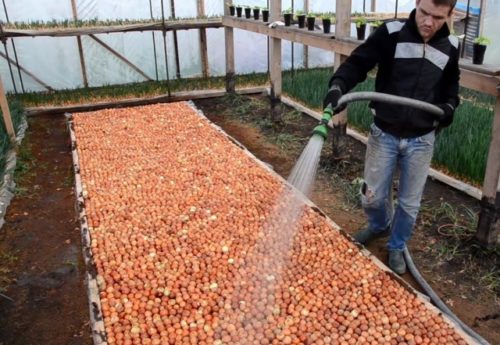
- For rapid growth and optimal development of Luke's leaves, from 2 weeks old in the greenhouse is supported by a 12-hour day day. Light shortage may result in yellowing, thinning or pulling the pen. In addition, the greens will not be juicy, with low taste. Vertically located lamps in the greenhouse prevent the unwanted louka pen climb.
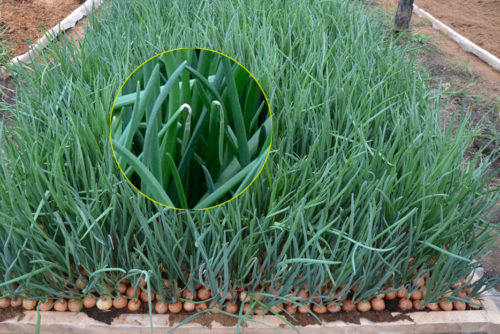
- From the feeding, the bestness is suitable for potashly - nitrogen complexes or individual fertilizers, such as potassium chloride and ammonium nitrate. They are added to the surface of the soil in a dry form, at the rate of 10-20 g and 20-40 g per m 2, respectively. Powder during watering dissolves and falls into the soil.
- Fucking Luke alternates with watering. Approximately 4-5 days before the cleaning of greenery, watering should be completely stopped.
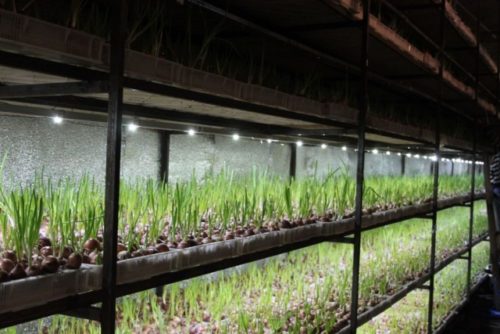
Growing onion technology on the pen in open soil
- To land on a bow on a green feather, a bulb is ideally suited, measuring from 2.5 to 4 cm in diameter.
- If the landing is carried out in the fall, it is important to calculate the aging and cutting of the greenery before the onset of the first frosts. You can land onion and in the winter, but then it is planted late in the fall, in the winter it is covered with a 5 cm layer with a layer, and the early spring is covered with a film.
- Most often, the onions in the open soil are planted in early spring, immediately after melting of snow (under the film from return freezers) or later (for example, in April), when stable warm weather is installed.
- Landing on the garden can be carried out, previously known, bridge (solid laying of bulbs) or tape (in grooves).
- In a bridge method of planting, the bulbs are sprinkled with soil, a layer of about 2-3 cm.
- When landing into the grooves, the interval between the "neighbors" is withstanding from 1 to 4 cm (depending on the size of the bulbs), and between the grooves -10-20 cm.
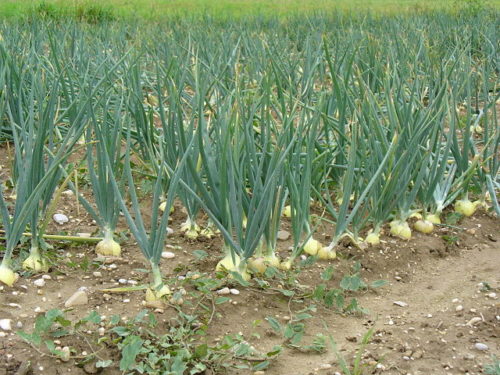
Onion Growing Technology on Seed Feather
- Growing onion from seeds takes longer than from adult sample bulbs. At the same time, this method is considered cheaper than the distillation of the pen from the bulbs.
- Before boarding, the seeds are better to soak in warm water by 6-12 hours. The weak solution of manganese will help to decapitate the planting material. Additionally, it is recommended to treat the seeds with a solution of the zircon biostimulator or epin.
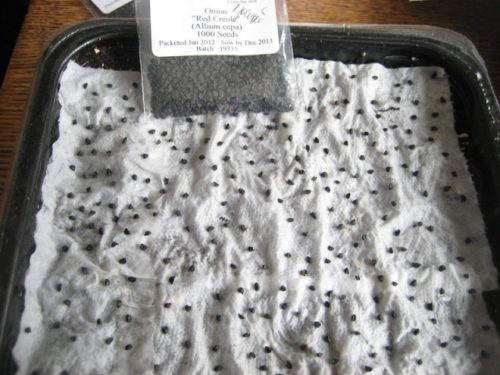
- Onion seeds on the feather are sown in the open soil in the summer, in about mid-July, rows with a range of 30-40 cm.
- Pre-prepared a bed: loose, fertilize, break all the kids. As fertilizers, the urea, humidiation, superphosphate, wood ash and potassium chloride is suitable.
- The thick seedlings are thinning to 3-5 cm between plants, and before the onset of frosts, they are covered with peat (straw).
- In the spring, after snow comes down, the greenery of the bow will be ready for use. It is not worth lingering with the harvesting of a greenery, that as the ripped onion is inclined to quickly form arrows.
- You can grow from seeds first the seedlings of the onion, which is then transplanted into the greenhouse.
Innovative Green Onion Growing Technologies on Feather
You can use other, unusual, techniques to distort the beaker. These include landing on the hydroponics, in sawdust and even in a polyethylene package.

Forcing the bow on the pen in hydroponics
- You can call this method of distillation of green innovative enough, because the special plates for hydroponics (mats) are used for this purpose.
- As a rule, forcing onion hydroponically is more suitable for mass cultivation, mainly for sale. Such allows year-round business to obtain high yields of green.
- Onions planted only in the wet and soiled (with liquid fertilizers) substrate.
- First, the onion landings provide cool and shaded conditions, and in a week (after the roots developed) the plants add light and heat (about 25 0C) - for active growth of green feather.
- Two weeks later, the length of the leaves reaches about 30 cm and is ready for a cut.

Everlock on the feather in sawdust
- Excellent and rapid results gives the growing of a bow in sawdust. For these purposes, any containers are prepared (from boxes to a plastic container from under the cake) and fill them with pre-dispenseed sawdust, 2-3 cm. For disinfection, sawdust is poured for 30 minutes with boiling water. The loose substrate is environmentally friendly sawdust is ready for landing.
- Prepared bulbs are laying out the bridge in the container and after 1.5-2 weeks it is formed 30 cm of green feather.
- Onions are periodically watered, but they do not feed anything. Sawdust as a substrate are used once.
Celling onion on the feather in the package
- For growing greenery, a clear whole polyethylene package is used.
- Prepared cropped bulbs are placed in the package (Donets down) to the "artificial substrate". For these purposes, wet sawdust or several layers of moistened, in warm water, toilet paper, which are stacked at the bottom of the package.
- The bulbs find it in a packet tightly to each other, a bridge.
- The package is inflated by air, tie with a rubber band and leave for 2-3 days to develop the roots of the plant. Lighting, for a given period of time, the plant does not need.
- After an indicated period, the closed package is placed in a well-lit place to germinate the pen.
- Over the package only when the feathers begin to rest in the top of the package.
- This method allows you to get a full-fledged greens for 10-12 days.
Varieties and views on the feather
What bow is suitable for growing per pen? Consider the most well-known and best layout varieties on the pen.
- Onions - Batun, which is also called Tatar, swivel, winter and sandy. Perennial grades "give" 2-3 distances for the season, annual - 1 trampling. Green smooth, fragrant. The view is demanding of high humidity.
- Schitt-Lukili "Lisen" is characterized by narrow (needle) fragrant leaves up to 50 cm in height. The form of a yield, with a delicate pen, is demanding of high-quality watering and lighting.
- Multi-tiered onions, referred to as "Canadian" or "Egyptian", is distinguished by high frost resistance and unpretentiousness. It is highly appreciated for the quality of greenery and yield, ideal for intersonic surveillance.
- Leeks - sometimes (pearl) - a yield view, characterized by wide juicy leaves with a delicate taste. Externally, the feather resemble garlic. View instead of the bulb, forms a thick white stem.
- Onions - the slimong is a frost-resistant and raw species, with delicate and wide, rounded from the edge, leaves. High-yielding, without a rest period, exudes a weak garlic fragrance.
- Onions - shallot is considered an unpretentious and hardy view, whose leaves for a long time retain freshness after cutting. "Kushchevka", as it is called in everyday life, gives high and stable yields.
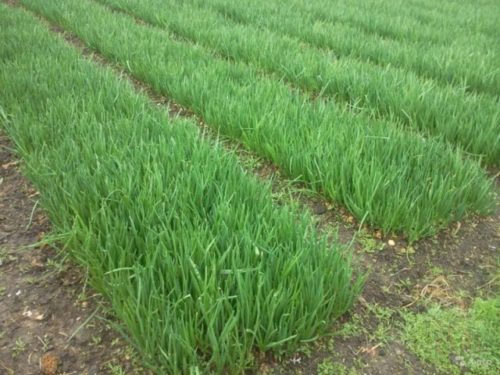
As for the grade, the best for the formation of greenery on the feather is the multi-chart species of onions, forming up to 5 sheets, and therefore the generators of the most thick and dense bushes. To check the amount of adventures, the bulb is cut into across and consider the number of adventures separated from each other (nests).
The best are such grades: Chebotar, Rostov, Ryazan, Danilovsky, Strigunovsky, Spassky, Amber, black prince.
At home, also good results give varieties: Siberian yellow, sprint. Good frost-resistant varieties (Union, Bessonovsky and Arzamas) are planted, as a rule, in the winter.
For greenhouse conditions, the Surprise varieties, Lira are more often used.

ONE CARE ON PERO
Compliance with all agrotechnical leases of the bow during the distance of the pen will provide the maximum yield of delicious juicy green.
Luke landing care includes:
- Disinfection
The disinfection is subjected to as a planting material (until the landings) and the soil. For this, the soil substrate shed a weak solution of manganese or copper mood.
- Watering
Watering is carried out as needed. On average, for the entire vegetative season of the aging of greens, it will be necessary from 4 to 6 polishers. Increased humidity, and even more so much moisture, can provoke the rotting of bulbs. A few days before harvest, watering ceases to significantly facilitate the process of cleaning and collecting the finished pen.
- Loosening
Swimming is especially relevant for growing onions in open ground. Regular loosening improves soil aeration, prevents the formation of a dense crust. Swimming is necessarily carried out a few days after each watering.
- Subcord
Feed the landing, on average, 2-3 times during the vegetation. Ammonium nitrate solutions are used as feeding (40 g per bucket of water), diluted (1:20) cowboat, complex mineral fertilizer. The feeders are necessarily combined with watering.
Often, the feeder is carried out after cutting the greenery so that the bulbs can rebound, with a new force, increase the green mass.


- Carrying
This measure is relevant when the pen is distured in greenhouse conditions. The ventilation (without drafts) normalizes the level of humidity and temperature in the greenhouse.
- Fighting diseases and pests
Growing high-quality greens does not allow the use of any chemicals. Therefore, it is better to prevent the diseases than to deal with them. The correct mode and conditions of the cultivation of the bow - the best prevention.
If, in the open ground, the feather onions turn yellow and slugg. - The plant can be affected by peronospose. In most cases, the source of infection with fungus are planting bulbs. To prevent infection of the entire planting, sick copies are destroyed, and the garden is sprinkled with wood ash.
- Cleaning
Having reached 30-35 cm, the pen is considered to be affected. You can remove the harvest with 2 ways: cut feathers and leave the bulbs for the next trampling or digging the greenery with roots.
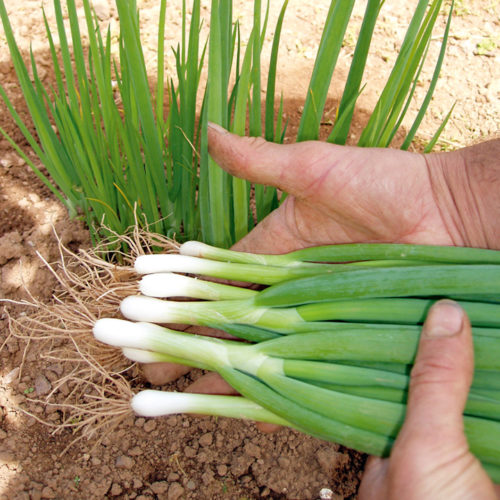
conclusions
- It is possible to grow onions on the feather all year round, at any time of the year. It is enough to create suitable conditions for culture and ensure proper care.
- To get a good breeding harvest, it is important to start, decide on the right grade of onions. An important role is also played by the competent preparation of the soil and planting material.
- There is a lot of ways to grow green leaves of onions. When used by the use of open or closed soil areas, strict observance of the favorable conditions for cultivation of culture, you can easily get rich yields of the useful product.

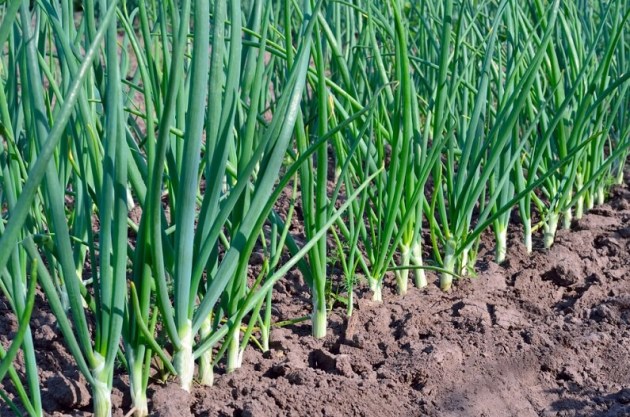

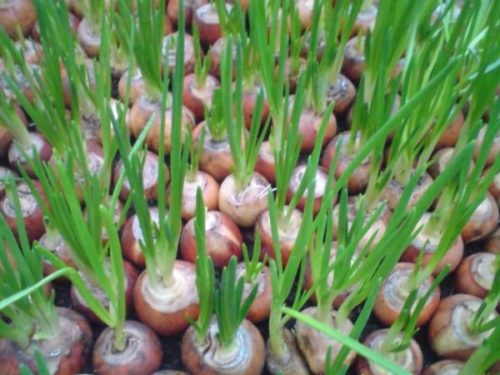


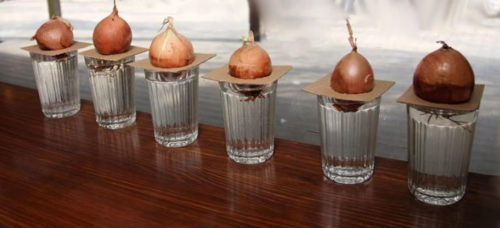
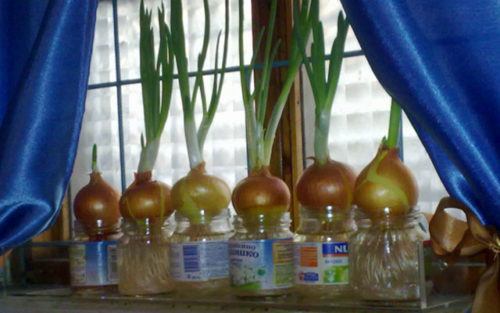

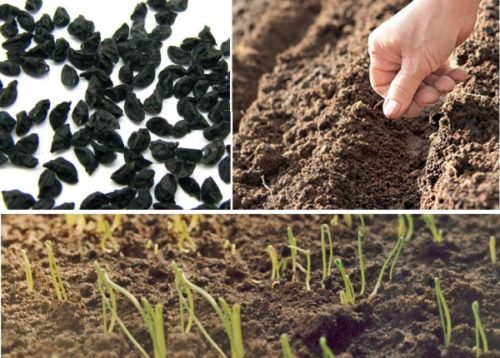

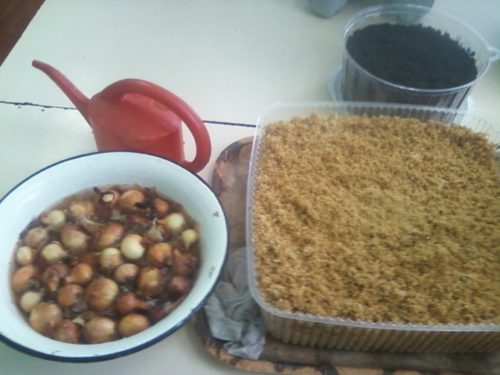

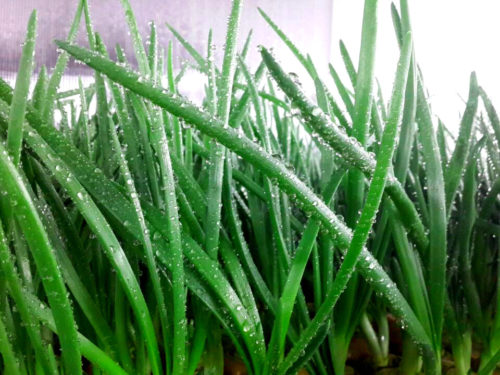













 Start a discussion ...
Start a discussion ...